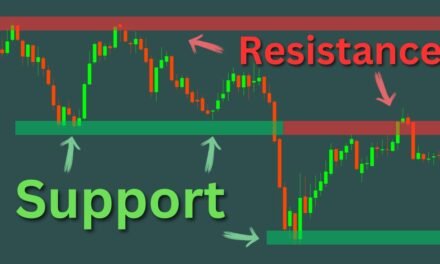Ever opened a trade, seen it hit profit, and closed it right away? That’s scalping, a fast-paced trading method where you jump in and out of trades quickly, aiming for small profits. In this article, I’ll share the Top 5 secret scalping rules to help improve the trading game. Let’s dive right into the article!
1. Trade during the most active sessions
The best times to scalp are during the London and New York sessions because of their high volatility. Scalping is all about catching quick, sharp moves in the market. If you’re trading during slower sessions, like the Asian or Australian sessions, you may find yourself waiting for hours with little movement. Stick to the active sessions to ensure the market is moving and you can grab those fast profits!
A great way to take advantage of these sessions is to look for breakouts, especially at the opening of the London session. The Australian session might be closing, but the London session often brings big moves, which you can ride for a solid profit.
2. Have a solid scalping strategy
Scalping is different from day trading or swing trading. You’re working on much smaller time frames, like the M1 or M5 (1-minute or 5-minute charts), so your strategy has to be quick and precise. Personally, when I scalp, I use a strategy with two moving averages—a 20-period and a 25-period. I simply wait for the 20 MA to cross the 25 MA. When the 20 crosses below the 25, that’s a sell signal. When it crosses above, that’s a buy signal.
This simple setup gives me “sniper entries” without overcomplicating things.
3. Avoid scalping during major news
Sure, the idea of catching those huge spikes during news events sounds tempting, but it’s risky. News events can create wild price movements that are hard to predict. You could enter thinking the market’s going up, only for it to reverse and stop you out. It’s better to stick to technical analysis and stay away from the news to keep your trades more predictable.
4. Keep your charts clean
I get it—indicators can seem helpful. But too many of them clutter your charts and slow down your decision-making process. You end up waiting for confirmation after confirmation, and by the time you’re ready to enter, the opportunity might be gone. I recommend keeping it simple. Use just a few indicators, like moving averages or RSI, and make sure your charts are easy to read. The cleaner your setup, the easier it is to spot good trades quickly.
5. Don’t overtrade in scalping
Scalping can be addictive. The quick profits make you want to keep trading, but overtrading is one of the main reasons many traders fail. Set a limit on how many trades you’ll take in a day, and stick to it. It’s better to focus on quality over quantity. Instead of opening tons of trades, you can open multiple positions on a single, high-quality setup. This way, you’re still taking advantage of good opportunities without overexposing your account to unnecessary risk.
Bonus tip: Withdraw your profits!
The ultimate goal of trading is to make money, so once you’ve made a decent profit, withdraw some of it. I learned this the hard way. A few weeks ago, I started with a $200 account and aggressively traded it up to $1,000 in one day. Instead of locking in my profits, I got greedy, kept increasing my lot sizes, and ended up losing a chunk of it. Don’t make the same mistake—withdraw your profits and enjoy the rewards of your hard work.
Stay tuned for more advanced trading strategies and tips.
Happy trading!









